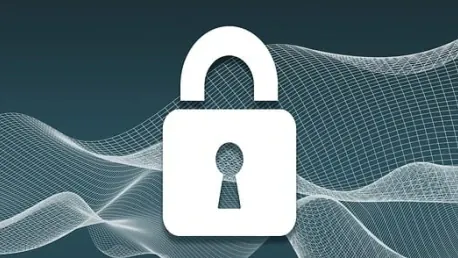The security benefits of two-factor authentication (2FA) have often been praised in cybersecurity circles, providing an added layer of defense against unauthorized access to online accounts. However, as cybersecurity threats continue to evolve, the effectiveness of 2FA systems is increasingly being called into question. This article explores the changing landscape of 2FA security, focusing on the rise and fall of exploit services and the new vulnerabilities and threats that have surfaced.
The Collapse of Rockstar 2FA and the Rise of FlowerStorm
The Downfall of Rockstar 2FA
Rockstar 2FA was once infamous in the cybersecurity world for its tools designed to bypass multi-factor authentication. This exploit service provided cybercriminals with the means to defeat a security measure that many users believed to be foolproof. The collapse of Rockstar 2FA marked a significant victory in the fight against cybersecurity threats. Yet, it did not signal the end of threats to 2FA systems. On the contrary, its downfall created a vacuum that other exploit services rapidly sought to fill, signaling a new wave of similar threats.
The demise of Rockstar 2FA shed light on the ever-present demand for tools that can overcome sophisticated security measures. It became clear that as long as there are entities seeking unauthorized access, new exploit services would continue to emerge. Despite Rockstar 2FA’s notorious reputation and ultimate collapse, hackers have remained determined to find new ways to breach security systems. This tenacity foreshadowed the arrival of new operatives such as FlowerStorm, demonstrating the persistent nature of cybersecurity threats.
Emergence of FlowerStorm
With Rockstar 2FA’s collapse fresh in the rearview mirror, the cybersecurity community faced the emergence of a new threat known as FlowerStorm. FlowerStorm is a phishing-as-a-service operation that quickly gained attention due to its uncanny similarities to its predecessor. Incorporating plant-related terminologies in phishing portals and maintaining a comparable backend structure, FlowerStorm bore significant resemblances to the now-defunct Rockstar 2FA. This new exploit service has been under close scrutiny since June 2024, signifying that the evolution of 2FA bypass techniques is far from over.
The rise of FlowerStorm underscores the continual adaptation of cyber attackers to circumvent enhanced security protocols. This phishing-as-a-service operation has demonstrated an adeptness at exploiting gaps in multi-factor authentication systems. By mimicking successful aspects of Rockstar 2FA and innovating on them, FlowerStorm represents an alarming evolution in 2FA threats. As such, it serves as a stark reminder of the continuous need for vigilance and innovation in cybersecurity defenses. The similarities between FlowerStorm and Rockstar 2FA suggest a potential link, indicating that new threats may directly evolve from the ashes of their predecessors.
Vulnerabilities in 2FA Systems
Phishing and Social Engineering Attacks
Phishing has consistently been a favored tactic among cybercriminals for initiating 2FA bypass attacks, and its prevalence shows no signs of diminishing. Users of prominent services like Google and Microsoft are particularly vulnerable to phishing attempts. These attacks often serve as entry points for bypassing 2FA protections. Google’s response to this persistent threat emphasizes the importance of utilizing security keys, which offer a stronger layer of defense compared to traditional SMS and app-based one-time passwords.
Security keys work by employing physical devices that generate codes, thus significantly reducing reliance on easily exploited software-based two-factor authentication methods. These keys provide more robust protection against a range of attacks, including automated bot attacks, bulk phishing efforts, and targeted social engineering schemes. By advocating for the use of security keys, Google aims to mitigate the risk of phishing attacks and reinforce its users’ online safety. The need for increased vigilance among users to detect phishing attempts cannot be overstated, as these deceptive endeavors remain a formidable threat to 2FA security.
AuthQuake: A Critical Security Flaw
Another significant vulnerability within 2FA systems came to light with the discovery of AuthQuake, which exposed a critical flaw in Microsoft’s 2FA implementation. This vulnerability allowed attackers to bypass the ten-attempt fail rate limit, enabling them to attempt multiple 2FA codes without being locked out. Such a flaw highlights the inherent risks of relying on outdated multi-factor authentication methods, which may not account for the advancing techniques used by cybercriminals. Fortunately, Microsoft has since addressed and remedied this issue, reinforcing its security framework.
AuthQuake served as a sobering reminder of the necessity to regularly review and update security protocols to counteract emerging threats. Security researchers, particularly those associated with Oasis Security, illustrated how such vulnerabilities could be exploited with alarming ease and effectiveness. Despite Microsoft’s prompt resolution of the issue, the incident underscores the continual need for vigilance and improvement within cybersecurity measures. This experience has also prompted reevaluation of older 2FA systems, emphasizing the importance of transitioning to more secure and adaptive methods to safeguard user accounts.
Defensive Measures and Adaptability
Google’s Approach to Enhanced Security
In response to the evolving landscape of cybersecurity threats, Google has placed a strong emphasis on the utilization of security keys. These keys play a crucial role in reducing the risk of phishing and other social engineering threats. Security keys provide a more secure and user-friendly alternative to traditional SMS and app-based one-time passwords. As part of its approach, Google encourages users to adopt security keys for their two-factor authentication needs, reinforcing the integrity of their online accounts against sophisticated attacks.
Security keys operate by leveraging a physical element in the authentication process, which drastically lowers the likelihood of compromised accounts through phishing schemes. This method offers a resilient defense mechanism that can thwart automated bots and large-scale phishing campaigns effectively. Google’s strategy to promote the use of security keys highlights the company’s commitment to enhancing user security amidst a backdrop of continuously evolving threats. By implementing these advanced tools, Google aims to stay ahead of cybercriminals and protect its users from increasingly sophisticated attack vectors.
Microsoft’s Response to Identified Vulnerabilities
Microsoft’s proactive approach to addressing and fixing vulnerabilities such as those exposed by AuthQuake demonstrates a commitment to user security. The identification of this flaw prompted immediate action, culminating in a thorough review and update of their 2FA implementation. This initiative underscores the importance of continuously improving security protocols to defend against an ever-changing threat landscape. Microsoft’s response serves as a case study in the necessity of swift and effective measures to mitigate risks associated with newly discovered vulnerabilities.
The rapid resolution of AuthQuake by Microsoft emphasized the critical need for organizations to remain agile and responsive to cybersecurity threats. This incident revealed the potential dangers linked to outdated multi-factor authentication systems and the pressing requirement for regular updates. By fixing the identified vulnerabilities, Microsoft has reinforced the security of its users’ accounts, minimizing the risk of unauthorized access. Such proactive measures solidify the importance of maintaining a robust and adaptive defense strategy in the face of persistently evolving cyber threats.
The Need for Advanced Security Solutions
Transition to Passwordless Authentication
As cybersecurity threats become more advanced, security researchers are increasingly advocating for a shift towards passwordless authentication solutions. These methods are considered to offer superior security compared to traditional password-based systems, which are often susceptible to a variety of attacks. Passwordless authentication relies on more secure technologies, such as biometrics and cryptographic keys, which provide stronger protection against cyber intrusions. This transition is seen as a crucial step in enhancing the security framework of online accounts.
Passwordless authentication solutions are designed to mitigate the weaknesses inherent in password-based systems. By eliminating the need for passwords, these methods reduce the risk of credential theft and other forms of cyber attacks. Security experts suggest that the adoption of such innovative solutions can better withstand the persistent and varied attacks targeting 2FA systems. In this evolving cybersecurity landscape, passwordless authentication is emerging as a viable and essential approach to safeguarding sensitive information. This shift towards more secure authentication methods represents a proactive step in fortifying defenses against sophisticated cyber threats.
Continuous Evolution of Defensive Strategies
The cybersecurity landscape is characterized by its constant evolution, with both threats and defense mechanisms perpetually shifting in response to one another. Security researchers and organizations emphasize the importance of maintaining high vigilance and adaptability in cybersecurity strategies. As attackers continuously develop new techniques to breach systems, it is imperative that defense measures evolve concurrently to counteract these advancements. This dynamic environment necessitates a proactive and innovative approach to cybersecurity to ensure robust protection.
Continuous evolution in defensive strategies involves regularly updating security protocols and staying informed about emerging threats. Organizations are encouraged to invest in cutting-edge technologies and practices to stay ahead of cybercriminals. This includes adopting advanced authentication methods, implementing comprehensive security training for users, and conducting frequent security audits to identify and address vulnerabilities. By fostering an environment of vigilance and adaptability, organizations can enhance their resilience against the ever-changing array of cyber threats. The ongoing collaboration between security researchers and organizations plays a vital role in fortifying defenses and safeguarding against future attacks.
Conclusion
Two-factor authentication (2FA) has long been celebrated for enhancing cybersecurity by adding an extra layer of protection against unauthorized access to online accounts. By requiring users to provide not just a password, but also a second piece of evidence, 2FA aims to significantly reduce the risk of cyberattacks. However, as cyber threats continue to become more sophisticated, the reliability and effectiveness of 2FA systems are increasingly being questioned. Cybercriminals are developing new methods to bypass these systems, and previously unknown vulnerabilities are coming to light. This article delves into the evolving landscape of 2FA security, specifically examining how exploit services have gained prominence and then declined, as well as highlighting the emerging vulnerabilities and threats. As the cybersecurity field advances, it becomes crucial to not only rely on traditional methods like 2FA but also to stay ahead with innovative and adaptive security measures to protect online accounts.









